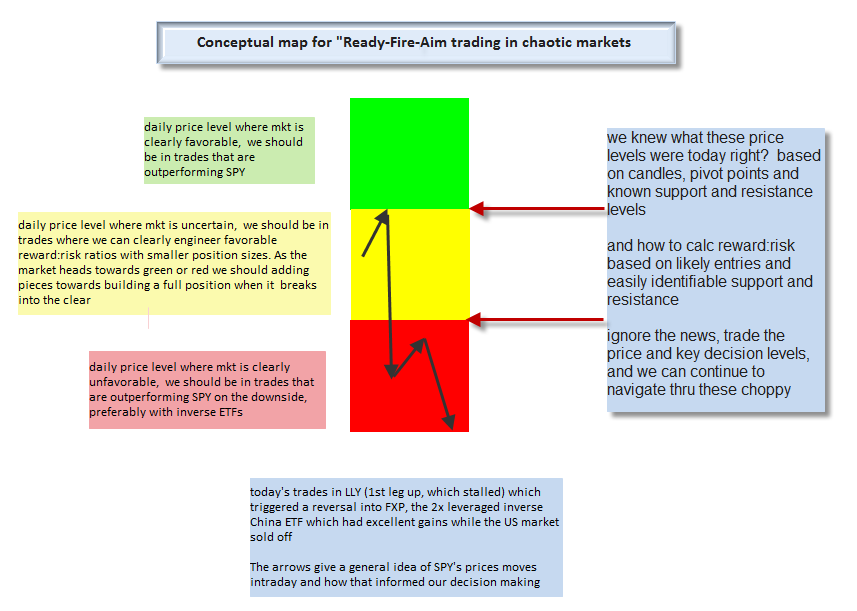Intraday trading brings together perspectives from any different time frames into a single arena. Sometimes it is hard to make sense of why buyers and sellers react so strongly at certain price levels and not at others. How can you quickly and easily organize the information from different time frames to shape your trading decisions?
One way to to frame your trading environment is to look at multiple time frames and find patterns and price levels that indicate support and resistance levels in the past. We cannot know with any certainty why a price level became support or resistance. The good news is that we don’t need to know why, only that it DID!.
The reasons why support and resistance occurred fade pretty quickly in time. All that remains, like footsteps in the snow, is the price record maintained on charts for all to see. The places where price turned and reversed will begin to take on a power in the minds of all chart readers and will begin to influence their decisions to buy and sell, to preserve profits or anticipate reversals.
This is why congestion areas begin to form around certain price levels.
In the same way that we should not be supposed to see traffic forming around major cities, we should expect choppy price behavior around previous support and resistance levels, and near the 50 day and 200 day moving averages, the two most popular moving averages.
Once you have identified the obvious support and resistance levels, treat prices greater than the congestion area as “Green zones” where you would not be surprised to see price move swiftly up.
Identify the congestion areas as “Yellow zones” where choppy behavior is the norm and where you do not have a particular edge unless you are a master tape reader.
Red zones are open price areas below congestion, where price can be expected to fall quickly once it breaks out of congestion.
In the Red and Green zones, which are really mirror images of each other, you want to be positioned to go with the path of least resistance. There’s not a lot of time to wonder what to do when price is here. Don’t chase price, but certainly take advantage of limit orders to pull you into good positions.
In the Yellow zone you should never chase, and always require a visible 2:1 reward to risk ratio inside the yellow zone to justify your entry. Don’t expect price to break out either, since congestion zones we expect price to be choppy and for breakouts to be false.
Framing your trading decisions in terms of these 3 color codes can definitely help you make proper decisions in the heat of the moment.

